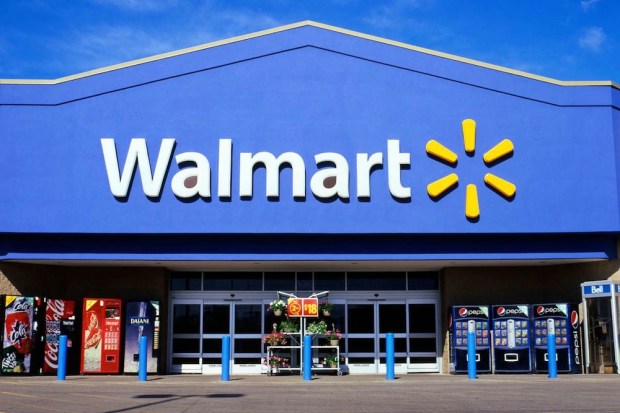Walmart Bot Strategy Is Not To Use Them

They say robots could replace as many as 38 percent of retail workers in the next 10 years, starting with cashiers. Not so for Walmart employees. The company is about to dump millions into tech upgrades, but the real investment it’s making is in human capital.
“Looking ahead,” said President and CEO Doug McMillon, “we will compete with technology, but win with people. We will be people-led and tech-empowered.”
When the discount department store exploded on the market in the 1990s, three decades after its inception by Sam Walton, it played a major role in shaping the retail market for many years to follow. Now it’s about to do it all over again.
Walmart has “started to invent the future of shopping again,” using technology to empower associates and improve the customer experience, McMillon told 14,000 associates during the company’s 47th Annual Shareholders Meeting.
“Together, we’re building a new Walmart,” he said. The new Walmart will be easier, faster and more enjoyable to shop at, McMillon said, listing some features that would soon be introduced on a trial basis.
With digital endless-aisle shopping, customers will be able to order products that are out of stock or not carried at the particular brick-and-mortar location where they’re shopping. The endless aisle helps stores avoid sales loss and expands inventory without having to expand on-site shelf space.
Robotics and image analytics will scan aisles for item availability and shelf presentation. Prices may change as Walmart phases in machine learning and more advanced algorithms to its pricing system, but the new prices will likely be more appropriate, since they’ll be based on data and analytics.
Online shoppers will be able to pick up their orders at in-store automated pickup towers or at pickup stations in store parking lots.
At 30 Walmart Academy training centers, new employees are learning their job from a virtual reality headset. Trainees virtually experience everyday situations, such as stocking produce, and extraordinary circumstances, such as a Black Friday rush. The VR training improves their real-world reaction time, pattern recognition and decision-making, according to Walmart spokeswoman Beth Harris.
“VR allows associates to experience a lifelike store environment to experiment, learn and handle difficult situations without the need to recreate disruptive incidents or disturb the customers’ shopping experience,” said Harris.
But Walmart isn’t going straight Tron. Though it’s always been ahead of the curve in terms of tech, introducing bar code scanners in the 1980s to track its immense inventory, the company is putting just as much emphasis on making itself — the biggest corporation in retail — feel more human and local.
And what could be more local than having packages delivered by a neighbor? Walmart has launched a new test in which employees drop off online orders at the homes of customers who live along their commute. This last-mile innovation cuts down on shipping time and costs.
Walmart’s stores put it within 10 miles of 90 percent of the U.S. population, meaning its employees probably pass by dozens of its customers every day as they drive to and from the store.
Associates must opt in to participate, but if they choose to do so, they can make a few extra bucks without going out of their way — and maybe make a new friend while they’re at it.
So far the delivery program is being tested in New Jersey and Arkansas and has received positive responses from associates and customers alike.
McMillon said Walmart is committed to building rungs like this so that associates can climb the ladder to success in whatever way makes sense for them. If that means learning to run a store or distribution center, that opportunity will always be there, but the company is also creating new opportunities: Going forward, it will need data scientists, machine-learning engineers and mobile app developers.
Painting Walmart as a “ladder of opportunity,” the CEO urged the company’s 2.3 million worldwide associates to be “lifelong learners.”
“I think we should recognize that we’ll be able to learn, grow and change together,” McMillon said.
Walmart has programs to source from women-owned businesses and American producers rather than foreign ones. The company is committed to sourcing local and sustainable offerings. It’s also working on reducing greenhouse gas emissions in its supply chain.
“Project Gigaton” is projected to help reduce emissions by one gigaton by 2030 — the equivalent of curbing 211 million U.S. passenger cars for a year. The plan, which focuses first on the manufacturing and materials end of the supply chain, makes Walmart the first retailer with a verified science-based target emissions reduction plan.
The company is also invested in solar and renewable energy, sourcing about 25 percent of its energy globally from renewable sources.
All of these initiatives just scratch the surface of the efforts the retail behemoth has been putting forth in recent months and years. The sum total message, however, is simple and clear: Walmart doesn’t just want customers’ business. It wants their trust.
“Our world is increasingly transparent, and we’re out to earn trust,” McMillon said. “When people shine a light on Walmart and see our decisions — the jobs we create, the activities in our supply chain — we want them to like what they see.”
